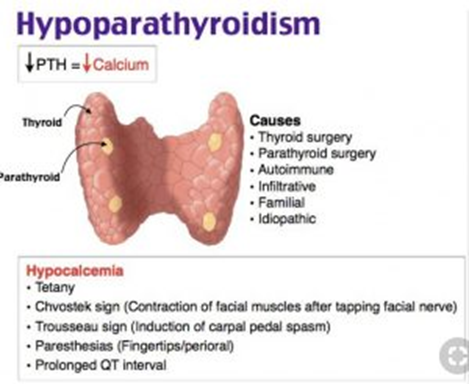A nursing instructor is evaluating a student caring for a neutropenic client. The instructor concludes that the nursing student demonstrates accurate knowledge of neutropenia based on which of the following interventions?
Monitoring the patient's breathing and reviewing the patients arterial blood gases
Monitoring the patient's temperature and reviewing the patient's complete blood count with differential
Monitoring the patients blood pressure and reviewing the patient's hematocrit
Monitoring the patient's heart rate and reviewing the patient's hemoglobin
The Correct Answer is B
A. Monitoring the patient's breathing and reviewing the patient's arterial blood gases:
Rationale: While respiratory status is crucial in any patient assessment, arterial blood gases primarily evaluate respiratory function. Neutropenia directly affects the immune system, not respiratory function.
Appropriateness: Not directly related to assessing neutropenia.
B. Monitoring the patient's temperature and reviewing the patient's complete blood count with differential:
Rationale: Neutropenia can cause fever due to the increased risk of infection. Monitoring temperature and reviewing the complete blood count (CBC) with differential, specifically the neutrophil count, is essential in evaluating neutropenia and identifying potential infections.
Appropriateness: Correct. Monitoring temperature and reviewing CBC with differential are crucial in assessing neutropenia.
C. Monitoring the patient's blood pressure and reviewing the patient's hematocrit:
Rationale: Blood pressure assessment and hematocrit evaluation are essential aspects of general patient care but are not specific to neutropenia.
Appropriateness: Not directly related to assessing neutropenia.
D. Monitoring the patient's heart rate and reviewing the patient's hemoglobin:
Rationale: Heart rate monitoring and hemoglobin assessment are crucial in various clinical situations but are not specific indicators of neutropenia.
Appropriateness: Not directly related to assessing neutropenia.
Nursing Test Bank
Naxlex Comprehensive Predictor Exams
Related Questions
Correct Answer is ["A","B"]
Explanation
A. I will inject my insulin by pinching up a large area of skin, and then inserting the needle.
The correct technique for subcutaneous insulin injection involves pinching a small area of skin (creating a skinfold) and inserting the needle at a 90-degree angle. Injecting into a large area might result in inadequate subcutaneous administration.
B. I can mix my regular acting insulin and my Lantus in the same syringe.
Lantus (insulin glargine) is a long-acting insulin that should not be mixed with other insulins. It should be administered separately to maintain its long-acting profile.
C. I can inject my insulin in the same location each time.
This statement is correct. Injecting insulin into the same general area consistently can help with consistent absorption.
D. I can use a needle/syringe more than once since I am the only one using it.
It is not safe to reuse needles or syringes. Single-use needles and syringes should be disposed of properly after each use to prevent infection and other complications.
E. I will discard my used syringes in a hard container, like an empty plastic milk jug.
This statement is correct. Used syringes should be discarded in a puncture-resistant container, and an empty plastic milk jug can serve as a suitable container for disposal.
Correct Answer is C
Explanation
A. "The parathyroid has no effect on calcium levels in the body; this will just help prevent osteoporosis":
Explanation: This statement is incorrect. The parathyroid gland plays a crucial role in calcium homeostasis. Hypoparathyroidism, characterized by decreased parathyroid hormone (PTH) production, leads to low blood calcium levels, not high levels.
B. "The reason you have hypoparathyroidism is that you were diagnosed with hypothyroidism, and when the thyroid doesn't work, neither does the parathyroid, so you need these supplements."
Explanation: This statement is incorrect. The parathyroid and thyroid are separate glands with distinct functions. Hypoparathyroidism is not a result of hypothyroidism.
C. "A decrease in parathyroid hormone causes low calcium levels, so your body to break down bones to maintain normal calcium levels, and this will prevent that from happening."
Explanation: This is the correct statement. Hypoparathyroidism leads to a decrease in PTH, resulting in low blood calcium levels. Without sufficient PTH, the body may resort to breaking down bones to maintain calcium levels.
D. "An increase in parathyroid hormone causes your body to move calcium into the cells to reduce blood calcium levels, so you have to replace the levels in the blood."
Explanation: This statement is incorrect. An increase in parathyroid hormone (PTH) typically leads to increased blood calcium levels by promoting the release of calcium from bones and reducing calcium excretion by the kidneys. This describes hyperparathyroidism, not hypoparathyroidism.

Whether you are a student looking to ace your exams or a practicing nurse seeking to enhance your expertise , our nursing education contents will empower you with the confidence and competence to make a difference in the lives of patients and become a respected leader in the healthcare field.
Visit Naxlex, invest in your future and unlock endless possibilities with our unparalleled nursing education contents today
Report Wrong Answer on the Current Question
Do you disagree with the answer? If yes, what is your expected answer? Explain.
Kindly be descriptive with the issue you are facing.
